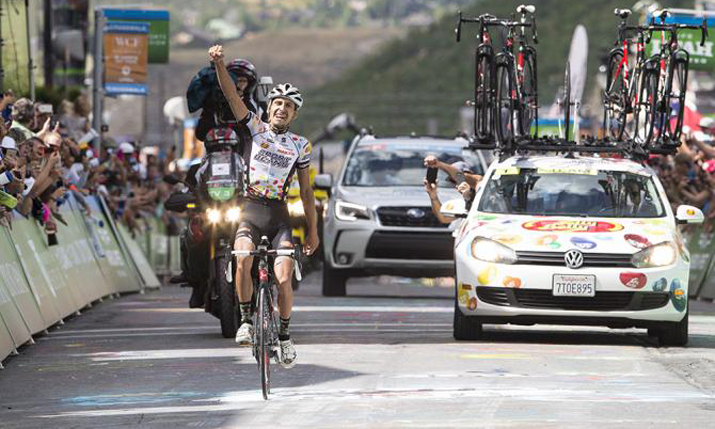Larry H. Miller S&E Meets Tour of Utah Challenges With RF Assist From 3G Wireless
Live broadcasts of the race aired in two-hour blocks on Fox Sports 2 this month
Story Highlights
Few live sports productions are more challenging than cycling. The sheer logistical challenges of broadcasting an event moving across hundreds of miles can be enough to make any coordinating producer break out in a cold sweat.
This month, Larry H. Miller Sports and Entertainment pulled off just that feat as they produced the week-long Tour of Utah race for Fox Sports 2. With two-hour live blocks in the afternoon, the productions required flawless connectivity on a fast track along rough terrain in a rather remote area.

The week-long Tour of Utah race spanned 700 miles, and coverage required RF connectivity and cable runs as long as long as 1,700-1,800 ft.
The challenges of such a broadcast are numerous, including picking up, moving, and resetting up a production compound (featuring, for the first time on this event, a dual-feed Mobile TV Group production truck) on a nearly daily basis. Naturally, RF connectivity is critical to this type of an operation, and Larry H. Miller entrusted support in that task to 3G Wireless.
“The RF piece is so difficult,” says Travis Henderson, VP, broadcasting, Larry H. Miller Sports and Entertainment. “You are on courses that are over a hundred miles long. Having good and consistent RF is critical, and 3G Wireless is tremendous for that.”
This year’s production featured up to four motorcycles on the course plus a helicopter, all with cameras capturing the action. To trace the paths of those signals, the camera systems are uplinked by 3G Wireless to a fixed-wing aircraft that serves as an intermediary point where the signals are gathered and transmitted to a receive site usually positioned atop a nearby mountain. From there, the receive site is linked via digital fixed pipe to the TV compound, where 3G Wireless’s RF quality-control trailer is located. Once the images have been screened to meet quality standards, 3G hands off the final pictures to the broadcast.
It’s a robust effort that requires complex setup and breakdown on a virtual daily basis, but it’s one that, according to 3G Wireless, sets a high standard for cycling production.
“We are continuing to build out the infrastructure and technology that we use to support these really complicated long-distance races,” says Gordon Capaccio, GM, 3G Wireless. “We want to be world-class, and the bar there is probably the Tour de France; that’s one that everybody knows. We are working very hard to make sure that our broadcasts meet or exceed that sort of yardstick, and I think we’ve made these investments have paid off quite a bit.”
On the RF side, there are numerous challenges that 3G Wireless faces head on with its services and technology, especially at a race of this scope and scale.
“For us, it’s tied to being able to get the proper amount of robustness, and that means that our compression technologies must be the latest and the greatest, be it H.264 or H.265,” says Capaccio. “In this particular case, we’re using H.264, but we are looking very long and hard at how we integrate H.265 and what that means for RF and, especially, spectrum and quality of video. So, for us, it’s about creating a really robust receive infrastructure, really robust links up to the aircraft, and a big footprint for the aircraft to be able to receive these assets that are spread out.”
Larry H. Miller Sports and Entertainment has worked with 3G Wireless numerous times on this event, and the two entities have paired up to introduce new wrinkles seemingly every year. They have added cameras on motorcycles, support for a reporter trailing in a car, and even a wireless microphone on a rider in the peloton.
“We love working with those guys because they always come to us wanting to try something new the next year,” says Henderson. “They are great at bringing some quality ideas based on what they have seen from the production to make things better. As a producer, you always appreciate that.”
The race spans approximately 700 miles, and the traveling compound features cable runs as long as long as 1,700-1,800 ft. It all added up to a production that all of those involved were proud to be a part of.
“We were very happy with the overall production,” says Henderson. “We feel like we had some really good images over tough terrain. We wanted to show off Utah and the beauty of the state. I feel like we did a lot of that and had a really good week.”
